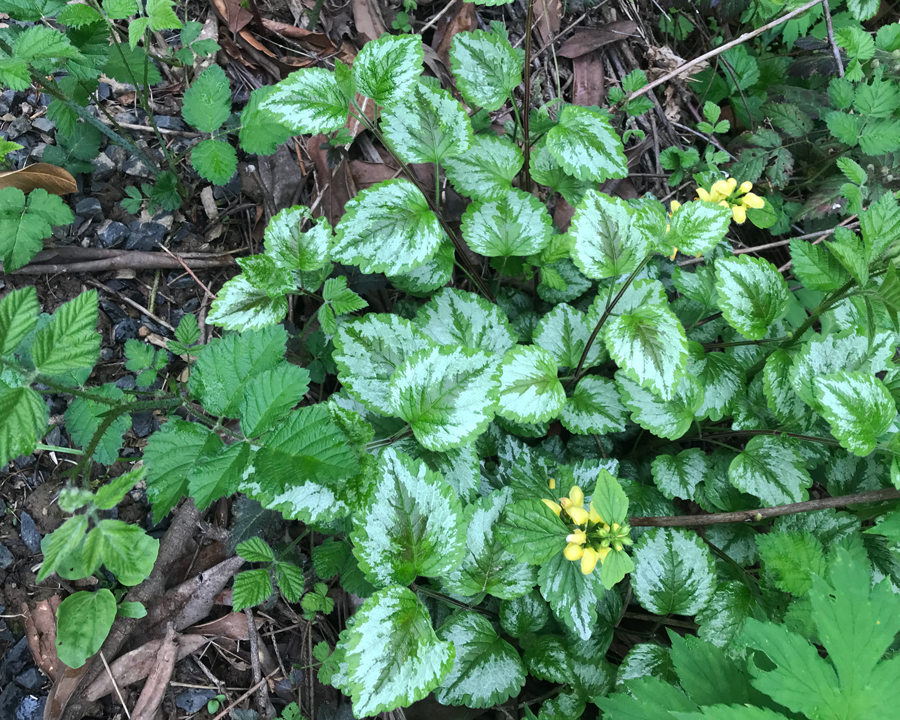Yellow Archangel Removal: A Comprehensive Guide
.
Need help with your yard? Get your free quote today!
Get a Free Quote!
Yellow Archangel (Lamiastrum galeobdolon) is easily identified by its variegated, silver-streaked leaves and bright yellow, hooded flowers. While often introduced as a decorative groundcover, it can quickly dominate landscapes and become a noxious invader. In many parts of the Pacific Northwest—including Victoria, BC—its rapid spread undermines native ecosystems and biodiversity. This guide provides everything you need to know about identifying, removing, and preventing the re-establishment of Yellow Archangel.
1. Why Is Yellow Archangel a Problem?
1.1. Aggressive Growth
Yellow Archangel spreads via stolons (above-ground runners) and can root at nodes along each stem. Once established, it forms dense mats that shade out native understory plants.
1.2. Habitat Displacement
It’s frequently found in forest edges, parks, and gardens, where it displaces local flora and reduces food and habitat resources for wildlife. Because it tolerates a wide range of soils and light conditions, it can proliferate in both sunlit and shaded areas.
1.3. Persistence
Like many invasive groundcovers, Yellow Archangel can regrow from small stem or root fragments. Even clippings discarded in yard waste piles can lead to new infestations if improperly disposed of.
2. Identification
Leaves
- Variegated with silver or lighter-green markings in the center, bordered by darker green edges.
- Oval to heart-shaped, opposite arrangement, with serrated or scalloped edges.
Stems
- Square in cross-section, characteristic of the mint family.
- Stolon-bearing, enabling the plant to spread laterally as it roots at nodes.
Flowers
- Bright yellow, hooded blooms typically arranged in whorls around the stems.
- Blooming season can vary, but generally occurs in spring to early summer.
3. Removal Methods
3.1. Manual Removal
Hand Pulling & Digging
Best for small to moderate infestations.
Technique:
- Pull up stems by hand, ensuring you remove the entire root or stolon segment.
- Work systematically in sections. Loosen the soil with a garden fork or trowel to help dislodge roots.
- Inspect the area thoroughly for leftover fragments, as even small pieces can regrow.
Tip: Remove plants when the soil is moist (e.g., after rain) to make root extraction easier.
3.2. Mechanical Control: Sheet Mulching
What It Is
- Cutting or mowing Yellow Archangel close to the ground, then covering the area with multiple layers of cardboard or newspaper, followed by a thick layer of mulch.
How It Works
- Deprives the plant of light, eventually killing it.
- Needs to remain in place for several months. Periodic checks for escaping runners or gaps in coverage are essential.
Pros & Cons
- Pros: Minimizes chemical use, improves soil health as materials decompose.
- Cons: Labor-intensive initial setup; may not be feasible in very large or heavily wooded areas.
3.3. Chemical Control
Chemical herbicides can be effective but should be used judiciously—especially near sensitive ecosystems or water sources. Always adhere to local regulations and follow label instructions.
Spot Treatments
- Applying herbicide directly to plants with a sponge or wick applicator.
- Helps minimize drift or impact on non-target species.
Selectivity
- Certain broadleaf herbicides target dicots like Yellow Archangel while sparing grasses, but they can still harm other broadleaf natives.
Caution
- Repeated applications may be necessary. Monitor for regrowth, as Yellow Archangel’s stolons and roots are resilient.
4. Proper Disposal of Plant Material
Disposal is a critical step in preventing accidental spread:
Bag It
- Place all removed plant material in sturdy plastic bags or sealed containers.
Avoid Home Composting
- Most home compost piles do not reach high enough temperatures to kill invasive stems or roots.
Municipal Green Waste
- Check local guidelines for the proper handling of invasive species. Many communities have specific protocols to ensure plant matter is incinerated or processed at facilities equipped to handle noxious weeds.
5. Replanting and Restoration
Once Yellow Archangel is removed, replanting the bare areas is crucial:
Native Groundcovers
- Kinnikinnick (Arctostaphylos uva-ursi)
- Woodland Strawberry (Fragaria vesca)
- Bunchberry (Cornus canadensis) for shady spots
Pollinator-Friendly Plants
- Use local wildflowers and ferns suited to the site’s light and moisture conditions.
Mulch & Care
- A layer of organic mulch (e.g., wood chips) around new plantings helps suppress weeds and Yellow Archangel regrowth.
- Water regularly until natives are well-established.
6. Monitoring and Maintenance
Even after initial removal, Yellow Archangel can regrow from missed fragments. Plan on:
Regular Inspections
- Walk through the area every few weeks—especially in spring and early summer—to spot any new shoots.
Quick Removals
- Pull up or cut back emerging plants as soon as they appear.
Long-Term Vigilance
- Depending on the size of the original infestation, it may take multiple growing seasons to fully eradicate Yellow Archangel.
7. Additional Resources
Invasive Species Council of BC
- Offers invasive plant identification guides, control strategies, and volunteer programs.
Capital Regional District (CRD) Guidelines
- Provides specific information on invasive plant disposal, environmental bylaws, and habitat restoration.
Local Stewardship Groups
- Organizations such as the Habitat Acquisition Trust (HAT) or municipal parks departments often host invasive removal events, providing community support and expert advice.
Conclusion
Yellow Archangel’s fast-spreading, mat-forming habit makes it a significant threat to native ecosystems. Yet with thorough, persistent removal efforts—including manual or mechanical techniques, judicious use of herbicides, and responsible disposal—you can significantly reduce or even eliminate this invasive species from your property. By replanting with appropriate native species and maintaining a watchful eye for regrowth, you’ll help ensure that your garden or local green space returns to a vibrant, ecologically balanced state.
